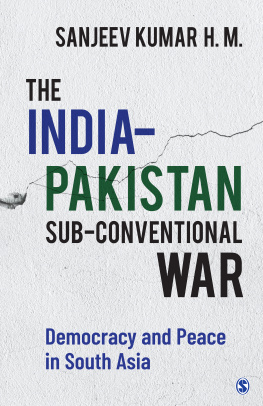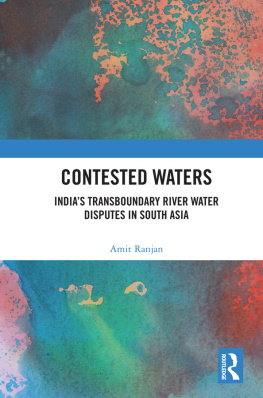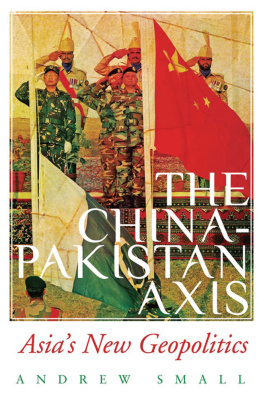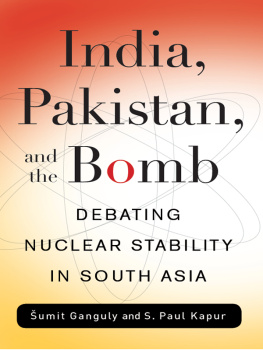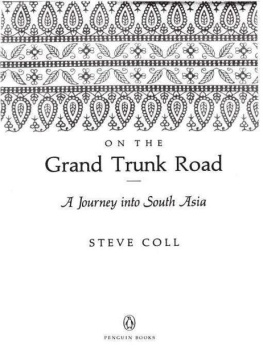First published 2000 by Ashgate Publishing
Reissued 2018 by Routledge
2 Park Square, Milton Park, Abingdon, Oxon OX14 4RN
711 Third Avenue, New York, NY 10017, USA
Routledge is an imprint of the Taylor & Francis Group, an informa business
Copyright 2000 Graham P. Chapman
All rights reserved. No part of this book may be reprinted or reproduced or utilised in any form or by any electronic, mechanical, or other means, now known or hereafter invented, including photocopying and recording, or in any information storage or retrieval system, without permission in writing from the publishers.
Notice:
Product or corporate names may be trademarks or registered trademarks, and are used only for identification and explanation without intent to infringe.
Publishers Note
The publisher has gone to great lengths to ensure the quality of this reprint but points out that some imperfections in the original copies may be apparent.
Disclaimer
The publisher has made every effort to trace copyright holders and welcomes correspondence from those they have been unable to contact.
A Library of Congress record exists under LC control number: 00133537
ISBN 13: 978-1-138-73693-1 (hbk)
ISBN 13: 978-1-315-18563-7 (ebk)
The Relative Permanence of Former Boundaries in India
Pangaea
The Dented Southern Flank of Asia
The Natural Vegetation of South Asia and Principal Mountain Ranges
The Distribution of Languages in South Asia
The Empire of Kala Asoka
The Gupta Empire
The Delhi Sultanate
Akbars Kingdom
The Moghul Empire under Aurangzeb
The Expansion of British Territory in India
The British Indian Empire of 1905
Rural Population Density
The Dates of Railway Expansion in India
Railways and Telegraphs in India 1880
Urban Fields of Influence in India 1961
Commodity Flows in the Indian Economy 1960s
Canal Irrigation in India 1870
Canal Irrigation in the Upper Indus at the Conclusion of the Triple Canals Project
The Indian Empire 1911
The Indian Empire 1921
The Distribution of Religions 1947
C. Rahmat Alis Proposals for Pakistan and Other New Indian Nation-States
The Seven Regions Scheme for the Federation of India
The River Basins Scheme for the Federation of India
The Communities in Punjab and Radcliffes Boundary Award 1947
The Communities in Bengal and Radcliffes Boundary Award 1947
The Line of Control in Kashmir
Territorial Division and the Successor States, c. 1955
Trade Flows between West and East Pakistan and the Rest of the World
Princely States in Pakistan c. 1950
Territorial Division and the Successor States, c. 1975
Linguistic Minorities in British Provinces of India, 1941
Linguistic Minority Districts of India in 1941
Linguistic Minorities in States of India, 1972
Linguistic Minority Districts of India in 1972
Percentage of Linguistic Minorities in Provinces/States over Time
Demands for Statehood or Independence, 1999
Canal Irrigation, British India 1931
Irrigation in East and West Punjab, 1947-1975
The Ganges-Brahmaputra Basin and the Link-Canal Proposal
The Ganges-Brahmaputra Basins and the Proposals for a Nepal-Bangladesh Canal and Other Developments
1987 Floods in Bangladesh
British, Russian and Chinese Spheres of Influence in Asia, 1800-1965
Mackinders Geopolitical Vision
Cohens Geopolitical Vision
Exports from SAARC Countries: Percent of Export Trade of Originating Country by Destination
Imports into SAARC Countries: Percent of Import Trade of Recipient Country by Source
Triangular Relationships
Triangular Relationships: S.Asia and External Powers
Triangular Relationships: S.Asia and External Powers: New Alliances
Triangular Relationships: S.Asia and the Middle East, circa 1986
New Alliances in South Asia
Basic Regions in South Asia
Pan-Indian Power over Time
Core Areas in South Asia
Pan-Indian Power over Time
The Prisoners Dilemma
Possible Stability Values of Triangles
Frequency Distribution of all Possible Patterns
Triangles Formed by Six Nodes
Distribution of Pattern Types
Moves which are Possible by Re-arranging One Edge
The Castes present in Karimpur (Wiser (1936))
A Chronology of Some Events in America, Britain and India
The Dedication and Contents List of Sir Richard Temples India in 1880
The Act of 1919: Government Functions
Percentage Distribution of Communities in India, 1941
West and East Pakistan: Inequality in Per Caput Gross Regional Product 1949-1970 ($ 1959-60 prices)
Water Availability and Use in the Indus Basin, 1947
Use of Ganges Water
Trading Pattern of India and Pakistan 1984-85
Sample National Statistics for India, Pakistan and Bangladesh (and UK for comparison)
This book is an introduction to the Indian Subcontinent and its three largest countries - India, Pakistan and Bangladesh. I hope and believe that it will be of use to students in history, geography, development studies, sociology and politics - and also to the lay reader who simply wishes to understand a little about this cultural heartland. I have long felt that students in many subjects and many departments are asked too soon to get down to the details of this period or that, this part of India or Pakistan, or that, before they had some understanding of the broader context. I have tried therefore to provide that broader context - to give the kind of launching pad from which those who are interested in learning and researching in more detail can then move on. I have tried to do so as much from an emotive point of view as a detached and objective point of view. What I have therefore tried to do is to tell a story chronologically - beginning in the geological past and continuing to the present day. At different points in this chronological story I take time to spin out some of the threads that might otherwise have been dealt with systematically - for example on caste, or on the management of water resources. The organising lynch-pin of this story is a geo-political one. The theme to which the book constantly returns is the relationship between society and the organisation of territory - as states and empires, as monarchic realms and as representative democracies - and the development culturally, linguistically, economically of the ever changing pattern of states. For this reason, this book could not have been published by an Indian, Pakistani or Bangladeshi author in his/her own country. Both peer pressure and legal constraint forbid the telling of disputes from an opponents point of view, and prohibit the publication of maps with counterclaims shown clearly on them.
Human society exists because of what the word society implies. It implies a degree of co-operation and order, or, in other words, the antithesis of anarchy. But anarchy can and does break out, at any scale from violence within the family to the outbreak of war between states. Throughout history social organisations of increasing scale have tried to control anarchy within, thereby implicitly leaving a residual anarchy without. Family units are grouped in tribes or clan units, traders and artisans are grouped in leagues and guilds, amalgams of both are subjected to empire. Empires then both wax and wane. In Europe a new system of states emerged after the anarchy of the 30 Years War, when the Treaty of Westphalia was signed in 1648 and the final vestiges of the Holy Roman Empire were dismantled. The modern states gained internal strength and cohesion, but were competitors with each other, and quite frequently at war. For this reason the international system of states which Europe has more or less imposed on the world has been called



